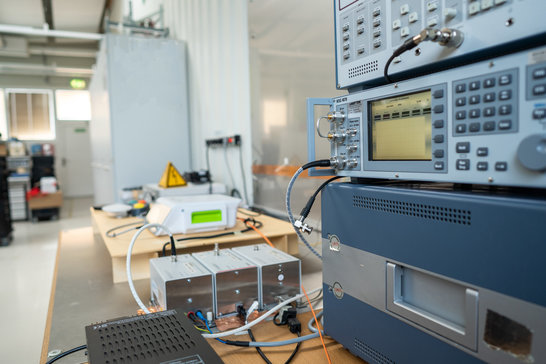Special
Compatible electrons
In order to ensure the long-term function of embedded systems, developers must deal with their electromagnetic compatibility - EMC for short.
![[Translate to Englisch:] [Translate to Englisch:]](/fileadmin/_processed_/c/7/csm_elektronen_21011417a5.jpg)
Even complex embedded systems are based on well-known physical mechanisms: the movement of electrons. As we all know from physics lessons, electron movement generates electromagnetic fields. Otherwise, there would be no radio, television or WLAN. Every embedded system is therefore also a transmitter. We have also learned that electrons can be influenced by electromagnetic fields. Of course, otherwise "radio waves" could never be converted into image and sound signals. So every embedded system is also a receiver of electromagnetic waves. The consequence of this is, our system - once in action - could influence other electronic devices. Or our system could be influenced by other devices.
You know this when you get close to a radio with your cell phone. Then you hear the grumble of the phone in the radio's speaker. This is unpleasant but not threatening. Older semesters may still remember the disturbances in the TV set when someone used the kitchen mixer. Then only snow flurries could be seen on the screen - quite annoying. It is really bad when electronic devices are affected in such a way that they can no longer be used or are even destroyed. In the case of ABS or pacemakers, that would be completely unacceptable.
In order to ensure the long-term function of embedded systems, developers must therefore deal with their electromagnetic compatibility - EMC for short. There are a lot of guidelines and standards that state how much interference a device may emit and how robust a device must be against external interference.

These are regulations that are mandatory by law and may vary from industry to industry. A device may not be placed on the market without complying with the applicable regulations. After all, it would be very bad if you always had to check yourself whether all other devices continue to function when you buy a new device.
Developers of embedded systems know many measures and tricks to make devices EMC-compliant. To be on the safe side, they always take the first sample devices to an EMC laboratory to put them through their paces and torture them. Only if a device complies with the required limit values is the development considered complete. Otherwise, further improvement measures must be taken.
Ginzinger EMC knowhow
EMC measuring station
A standard-compliant EMC measurement station at Ginzinger electronic systems offers developers the possibility to carry out various conducted measurements directly in house in compliance with the standard. These are also carried out during development so that there are fewer surprises later in external laboratories. Since the conducted RF coupling takes a lot of time, valuable time can be saved in advance in the EMC laboratory. As a complete electronic supplier, Ginzinger thus offers clear added value, as time and costs are saved.

